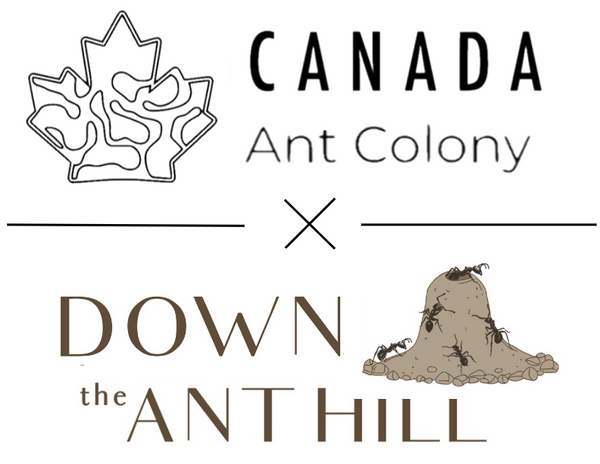This guide was compiled and written by Daniel Cantin of the 'Ants and Antkeeping' discord server, which can be found here. https://discord.gg/YbZGvtR3
This guide has been posted with the permission of the authors. The original article may be found here. I have also made some edits based on my own observations
Caresheet - Aphaenogaster picea
The "black funnel ants" are infamous for building their large funnel-like ant hills. The black, super aggressive ants likely originate from Canada (Ontario and Quebec) and the North Eastern United States. Due to the lack of a social stomach have very interesting feeding patterns.
Taxonomy
Family: Formicidae
Subfamily: Myrmicinae
Tribus: Stemammini
Genus: Aphaenogaster
Species: Aphaenogaster picea
Basic info
Origin: Canada, North Eastern United States.
Habitat: Enjoys warm temperatures but doesn’t necessarily need them, I have kept them in an air-conditioned room and they have done just fine. They enjoy a very moist nest with a good amount of darkness.
Colony form: strictly monogynous
Colony size: up to 10 000 workers
Colony age: 5-10 years
Founding: fully claustral
Workers: monomorphic
Nesting: Digs nests into dirt and often burrows quite deep. They also love living in wood and other rotting plant materials.
Hibernation: At least 4-5 months of hibernation in 4-6 degrees celsius.
Reproduction: Nuptial flights throughout May to August.
Appearance
Workers: They are black/very dark brown head. Their thorax is black but their gaster is a dark maroon with orange stripes.
Queen: Black head with a light black thorax. Gaster is black and has a dark maroon undertone. Also has a shiny tint on gaster. The look like different coloured larger workers.
Drone: Dark brown head with black thorax. Gaster is black and the legs are semi-transparent.
Size
Workers: 5-8mm
Queens: 11-13mm long
Drones: around 5-7mm long
Development time
at 75°F (24°C)
Egg to larvae: around 8-9 days
Larvae to pupa: around 10 days
Pupae to worker: Around 10 days
Egg to worker: 28-29 days
Ant keeping information
Recommendation: Great for beginners. Very big and easy to observe.
Temperature: 14-29° Celcius
Nesting materials: Nests in dirt and wood.
Humidity: 30 - 60%
Nest types: dirt nest, rotting wood, cork nest
Formicarium size: should fit the current colony size and be expanded as the colony grows
Formicaruim accessories: heat source (optional).
Substrate type: -
Behaviour
These ants are quite curious and often come to investigate a sound or smell. They often leave the nest in tandems or small packs.
Young colonies are a but shy but but very aggressive if the nest is threatened. The larger the colony, the more aggressive the workers become.
These ants have very interesting foraging strategies when dealing with sugar soruces. The workers cover substrate in honey and bring it to the nest because the ants lack a social stomach.
Additional information
Aphaenogaster lack a social stomach so offering materials like coarse sand, cotton, tissue paper or cotton is essential so they can cover it in honey or suagry liquids and bring it back to the nest. If you observe them carefully and study which materials they prefer you can find out what works best for them. Studies revealed the workers have a great understanding of which materials are best for holdig liquids and will prefferably use those over other materials.
These ants are great to watch - the workers are constantly oactive and their queens are always on the move.
Aphaenogaster picea uses the stretching strategy to subdue and dismember their prey.
If you’re putting them into a natural set up, put your lighting outlet near the glass to produce heat and they will nest beside it!
Diet
Sugars
Aphaenogaster picea love honey. From my experience they LOVE fruits, possibly because fruits are easier to take back to the nest and offer a lot of sweet liquids. They dislike sugar and honey water though because it is harder to coat substrate with.
Protein
They will eat nearly anything you give them. But they love hunting mealworms.
Author: Daniel Cantin (ant keeping discord)
